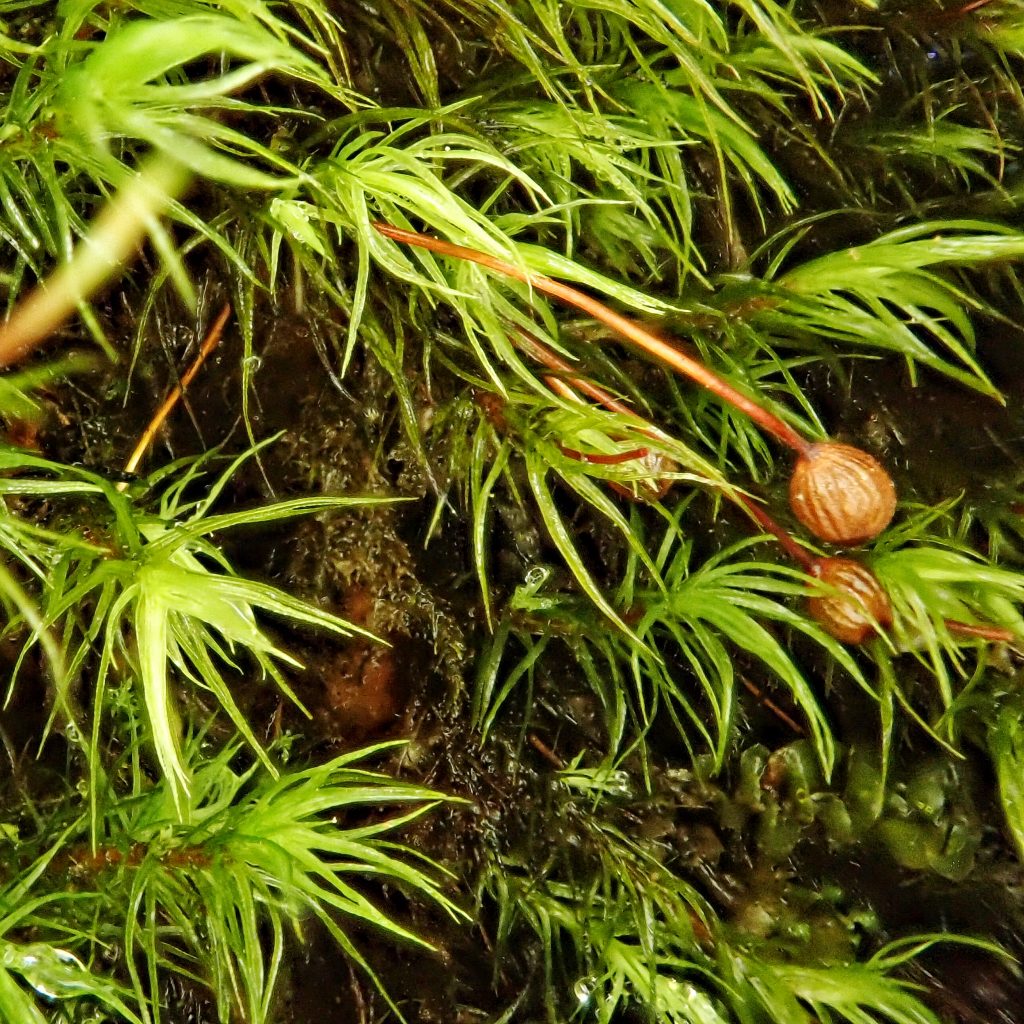
When you find this moss with freshly matured capsules it is glaringly obvious why it frequently goes by the common name of green apple moss. Alas, they don’t retain that smooth texture and perfect apple green color for long. But the older capsules are still very striking, walnut brown with latitudinal ribs.
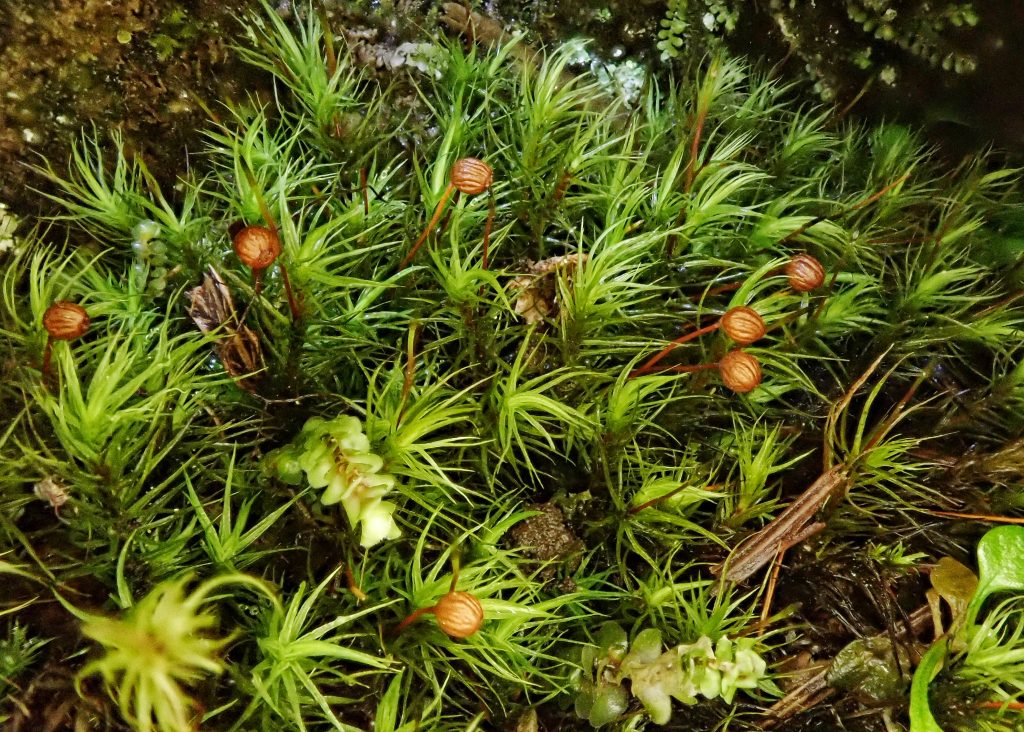
It is harder to be certain at a glance of the identity of this moss when it is lacking capsules. But fortunately that is not often. This is a very fertile moss, and in temperate, low elevation forests west of the Cascades it can be found with sporophytes every month of the year.
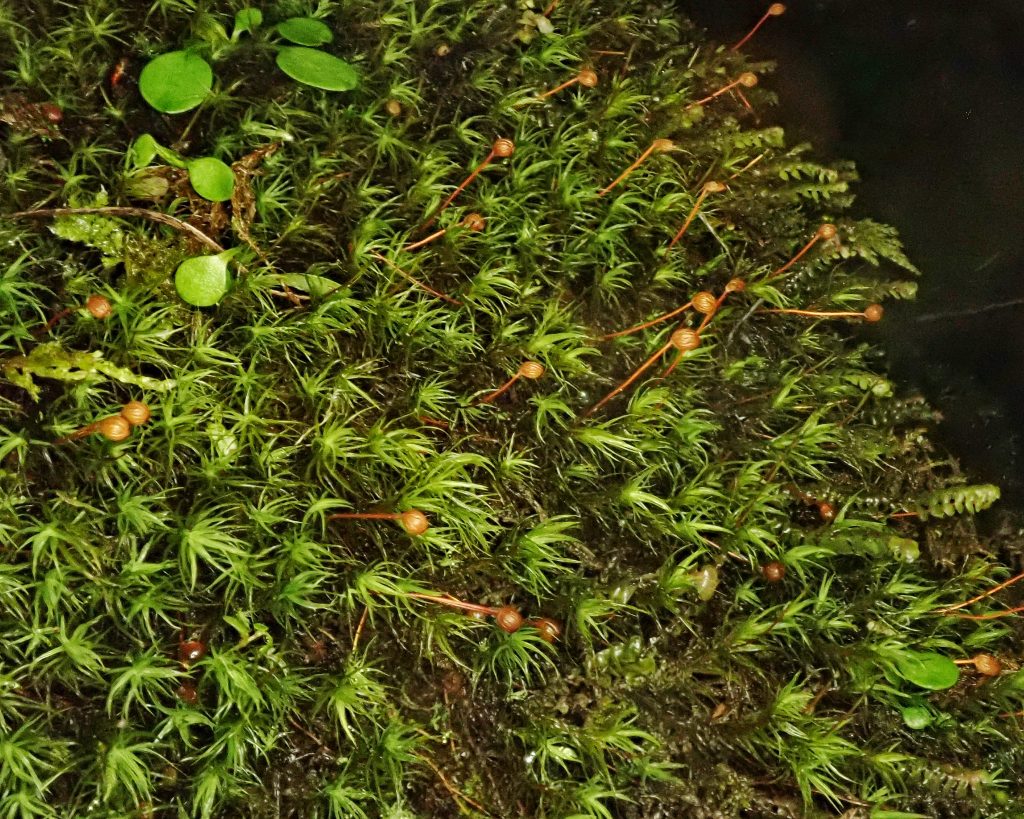
This is a rock loving moss which I expected to find on The Cliff. But it can be inconspicuous, overshadowed by larger vascular plants. I found this patch doing a close examination of the cliff by headlamp, during an evening visit with Craig Sondergaard and his grandson William last weekend in search of prowling salamanders. And we did find some salamanders, although the only species we found that I haven’t profiled here, a torrent salamander, would not cooperate for a photo.
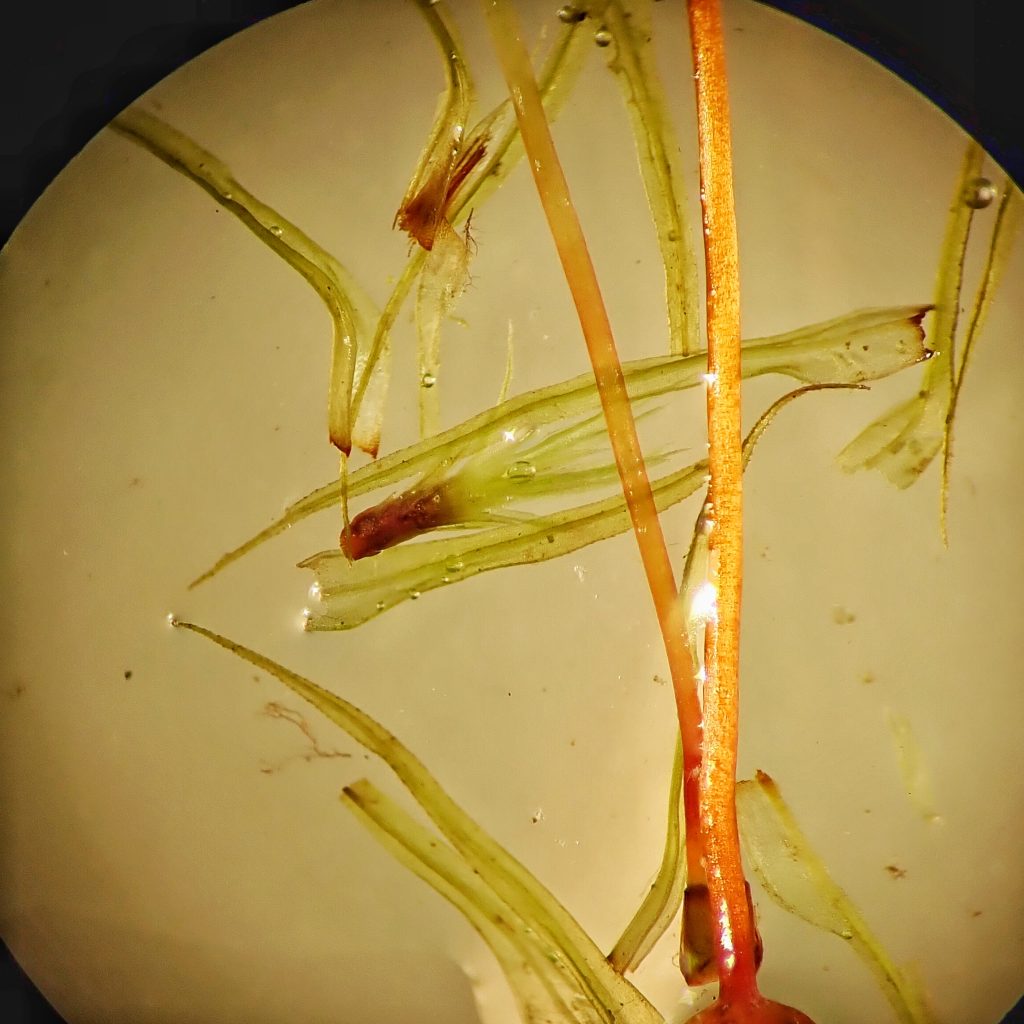
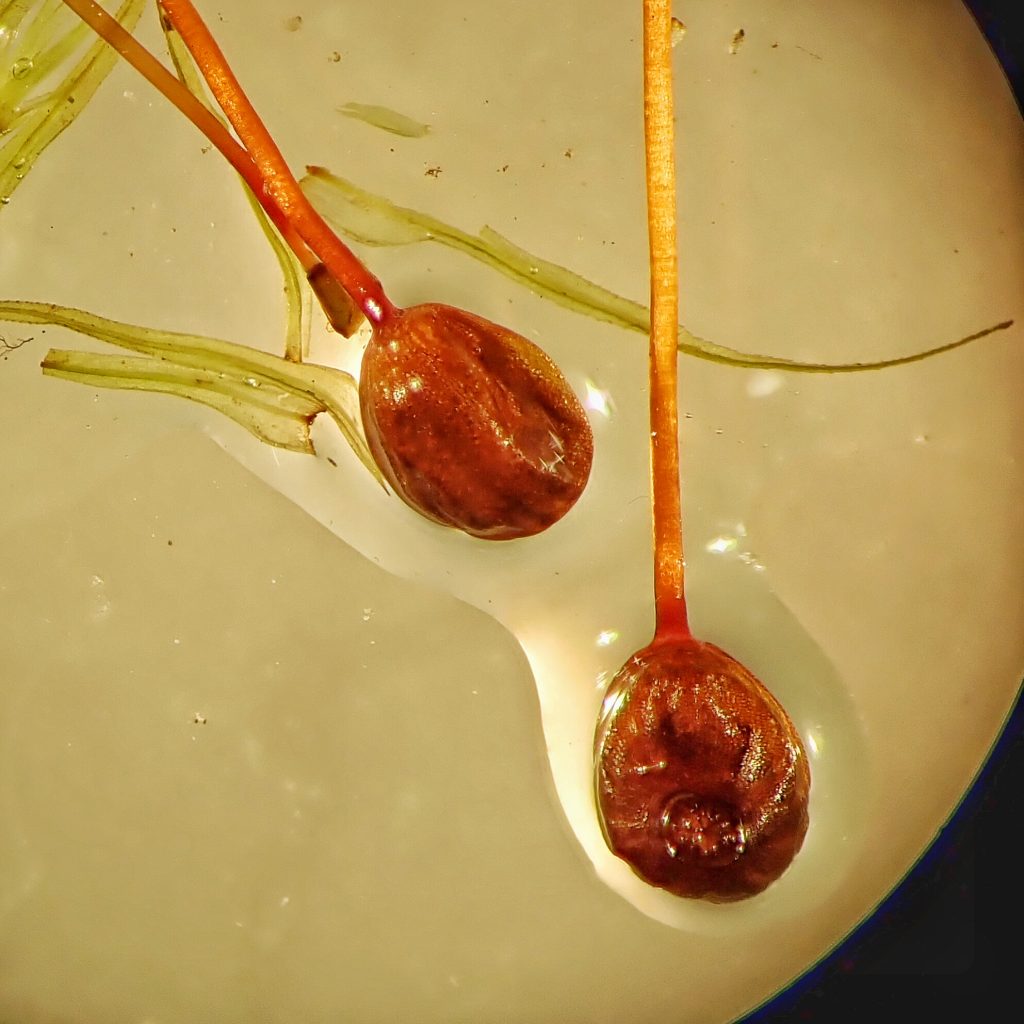
Description-Green to yellowish green moss; grows in dense patches up to 4” high; stem often branches; leaves long and gradually narrowing; usually at least 8x as long as wide; margins toothed, and recurved on lower half, moderately sheathing leaf base; costa single and reaching apex; leaves strongly angled away from stem when wet, folded in, crisped and contorted when dry; seta several times the length of the capsule; mature capsules spherical and green, becoming ribbed and brown with age;
Similar species– Nothing else has this combination of linear, gradually narrowing leaves, round capsule, and sera several times as long as the capsule.
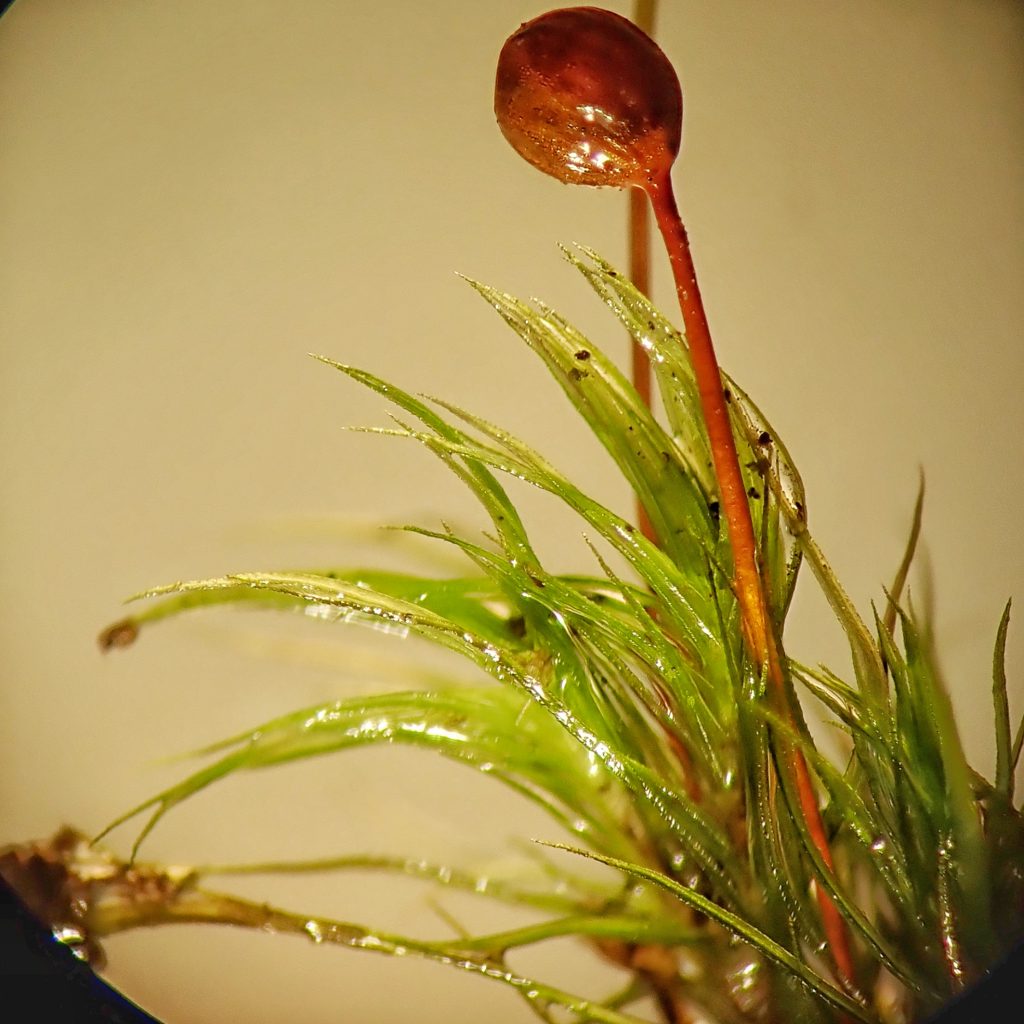
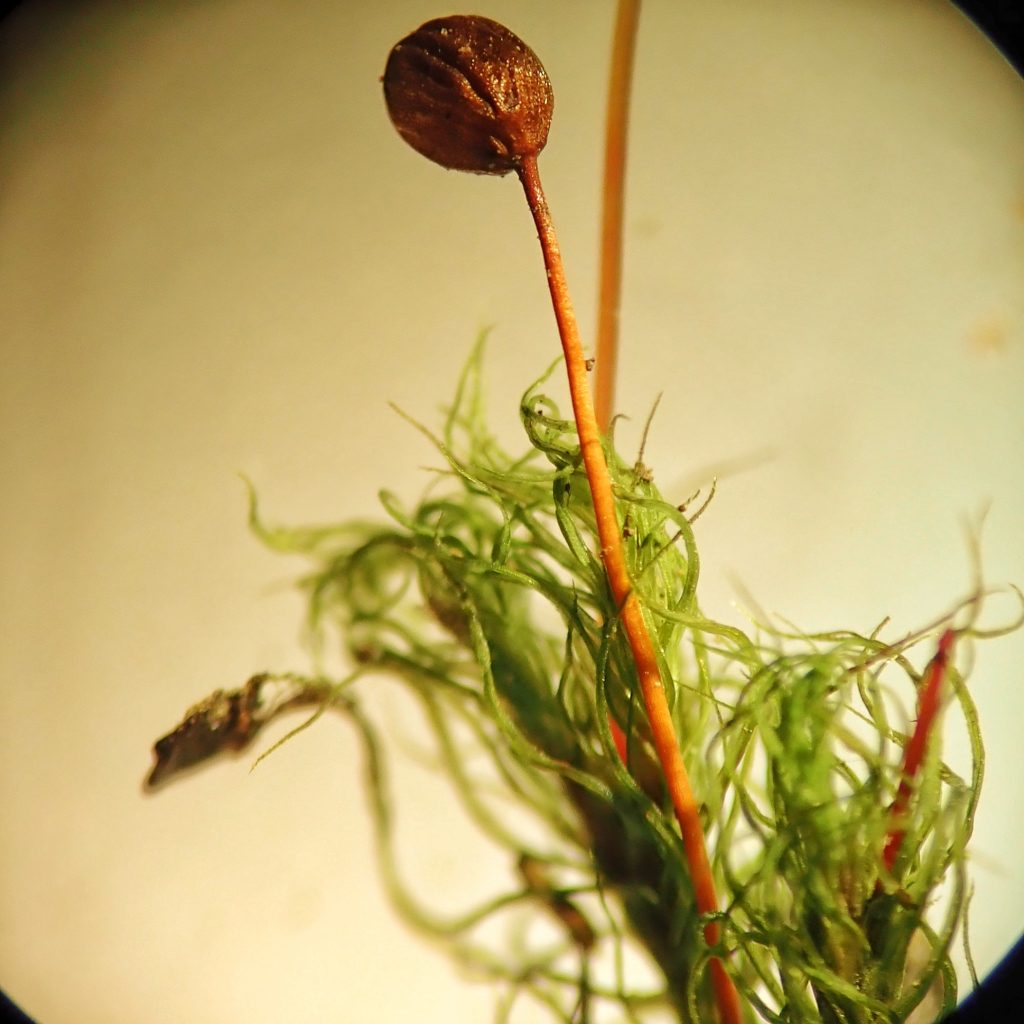
Habitat– On soil, soil over rock, and rock crevices in conifer forests up to 5000’ elevation.
Range– Region wide in appropriate habitat.
Reproductive timing– Winter-spring-fall
Etymology of names– Bartramia honors John Bartram (1699-1777), an American who Carl Linnaeus called “…the greatest natural botanist in the world.” The specific epithet pomiformis is Latin for ‘apple-like’, and refers to the look of the capsules when freshly formed.
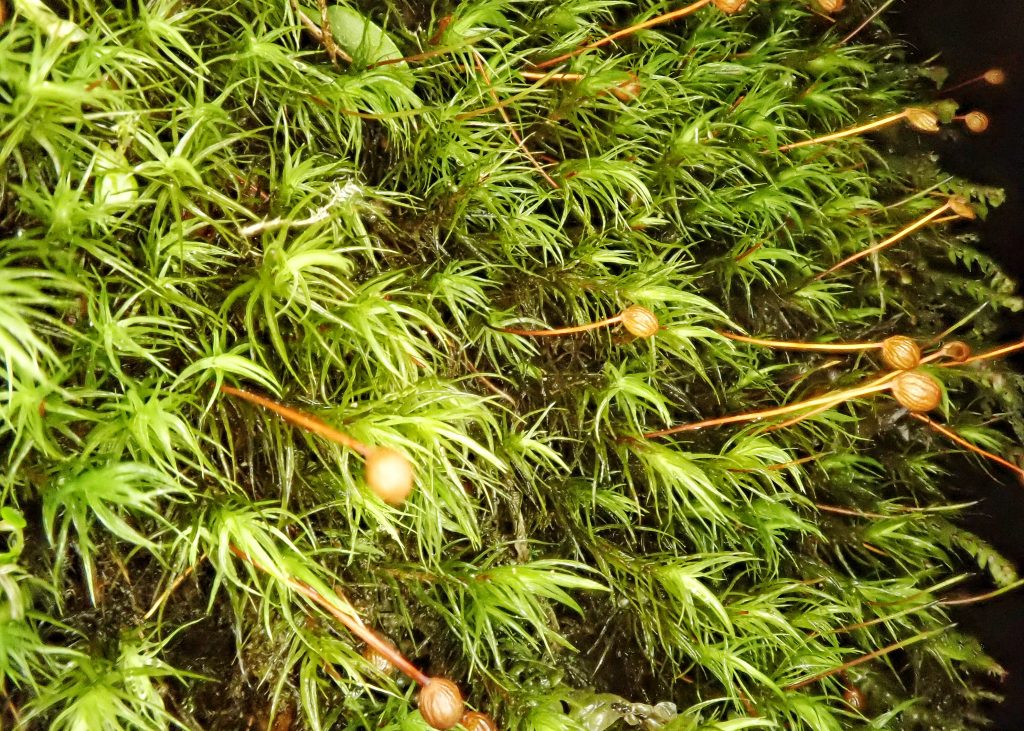
http://www.efloras.org/florataxon.aspx?flora_id=1&taxon_id=200001554
https://ucjeps.berkeley.edu/cgi-bin/get_moss_treatment.pl?taxon=Bartramia%20pomiformis
https://websites.rbge.org.uk/bbs/activities/mosses/Bartramia%20pomiformis.pdf
https://en.m.wikipedia.org/wiki/Bartramia_pomiformis
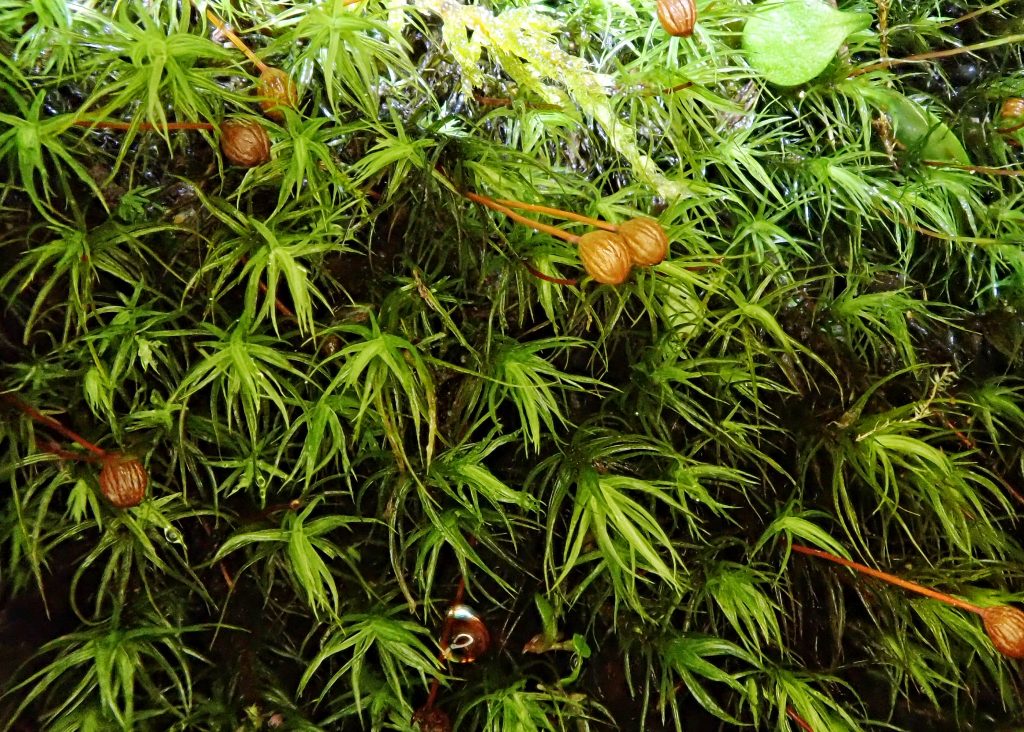
Very cool moss! Thank you ☺️